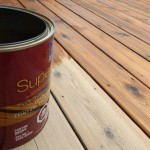Interior Painting NYC: A Comprehensive Guide
Navigating the world of interior painting in New York City presents unique challenges and opportunities. From the diverse architectural styles of apartments and brownstones to the stringent building codes and competitive market, successful interior painting projects require a strategic approach. This article provides a comprehensive overview of the key considerations for interior painting in NYC, enabling homeowners, renters, and property managers to make informed decisions.
The cost of interior painting in NYC is influenced by several factors. The size of the space, condition of the walls, level of preparation required, type of paint used, and experience of the painting contractor all contribute to the final price. It is crucial to obtain multiple estimates from reputable painting companies to compare pricing and services. A detailed estimate should outline the scope of work, including surface preparation, number of coats of paint, and cleanup procedures.
Choosing the right paint color is a critical decision that can significantly impact the overall aesthetic of a room. Light colors tend to make spaces feel larger and brighter, while darker colors can create a more intimate and cozy atmosphere. Consider the existing furniture, flooring, and natural light in the room when selecting paint colors. It is recommended to test paint samples on the walls before committing to a final color to ensure it complements the existing decor.
Proper surface preparation is essential for achieving a professional and long-lasting paint job. This typically involves cleaning the walls to remove dirt, dust, and grease, patching any holes or cracks with spackle, and sanding the surfaces to create a smooth and even base. Applying a primer before painting is also recommended, as it helps to improve paint adhesion and coverage, especially on new or previously unpainted surfaces.
Selecting the Right Painting Contractor
Choosing the right painting contractor is a critical step in ensuring a successful interior painting project. It is important to research and vet potential contractors thoroughly. Check online reviews, ask for references, and verify that the contractor is licensed and insured. A reputable painting contractor will have a proven track record of providing quality workmanship and excellent customer service. They should also be knowledgeable about the different types of paint and application techniques, and able to provide expert advice on color selection and surface preparation.
Obtaining multiple estimates from different painting contractors is recommended to compare pricing and services. A detailed estimate should outline the scope of work, including surface preparation, number of coats of paint, type of paint used, and cleanup procedures. It is also important to inquire about the contractor's warranty or guarantee on their work. A reputable contractor will stand behind their work and offer a warranty to protect against defects or premature wear and tear.
Communication is key throughout the painting process. A good painting contractor will maintain open communication with the client, keeping them informed of the progress of the project and addressing any concerns or questions that may arise. They should also be respectful of the client's property and take precautions to protect furniture and belongings from paint splatters and damage.
Before hiring a painting contractor, it is essential to review their portfolio of previous work. This will provide a visual representation of their skills and expertise. Look for projects that are similar in style and scope to your own to assess their ability to handle the job. Pay attention to the details, such as the smoothness of the finish, the sharpness of the lines, and the overall quality of the workmanship.
Beyond the technical skills, consider the contractor's professionalism and demeanor. Are they responsive to inquiries? Do they arrive on time for appointments? Are they respectful of your time and property? A professional and courteous contractor will make the entire painting process smoother and more enjoyable.
Navigating NYC Building Regulations and Permits
Depending on the scope of the interior painting project, it may be necessary to obtain permits from the New York City Department of Buildings. This is particularly true for projects that involve significant structural alterations or renovations. It is important to check with the Department of Buildings to determine if a permit is required for your specific project. Failure to obtain the necessary permits can result in fines and delays.
Many apartment buildings in NYC have specific rules and regulations regarding interior renovations, including painting. These rules may pertain to the hours during which work can be performed, the types of materials that can be used, and the procedures for protecting common areas. It is important to review the building's rules and regulations before starting any painting project. Failure to comply with these rules can result in fines and other penalties.
In older buildings, there may be concerns about lead paint. If the building was built before 1978, it is important to have the paint tested for lead before starting any painting project. If lead paint is present, it must be properly abated by a certified lead abatement contractor. Disturbing lead paint can pose serious health risks, especially to children and pregnant women.
Proper ventilation is essential during interior painting projects to minimize exposure to paint fumes. Open windows and use fans to circulate air and remove fumes. If possible, consider using low-VOC (volatile organic compounds) paints, which release fewer harmful chemicals into the air.
Disposal of paint and painting supplies must be done in accordance with local regulations. Leftover paint should not be poured down drains or into the trash. Instead, it should be taken to a designated household hazardous waste collection site. Empty paint cans and brushes should be disposed of properly to minimize environmental impact.
Selecting the Right Paint Type and Finish
The type of paint used can significantly impact the durability and appearance of the finished product. There are two main types of interior paint: latex paint and oil-based paint. Latex paint is water-based and is generally considered to be more environmentally friendly and easier to clean up. Oil-based paint is more durable and provides a harder finish, but it requires more effort to clean up and emits stronger fumes.
The paint finish also plays a role in the overall look and feel of a room. Different finishes offer varying levels of sheen and durability. Matte finishes have a low sheen and are good for hiding imperfections on walls. Eggshell finishes have a slightly higher sheen and are more durable than matte finishes. Satin finishes have a higher sheen and are more resistant to stains and mildew, making them a good choice for bathrooms and kitchens. Semi-gloss finishes have a high sheen and are very durable, making them ideal for trim and doors. Gloss finishes have the highest sheen and are extremely durable, but they can also highlight imperfections on walls.
For high-traffic areas, such as hallways and playrooms, it is recommended to use a durable paint with a higher sheen. This will make the walls easier to clean and less prone to scuffing and damage. For bedrooms and living rooms, a matte or eggshell finish may be preferred for its softer and more subtle appearance.
Consider the specific needs of each room when selecting the paint type and finish. For example, in a bathroom, it is important to use a paint that is resistant to moisture and mildew. In a kitchen, it is important to use a paint that is easy to clean and can withstand spills and splatters.
Before applying the final coat of paint, it is important to inspect the walls for any imperfections. Fill any holes or cracks with spackle and sand the surfaces smooth. Apply a second coat of primer if necessary to ensure even coverage and adhesion. Taking these extra steps will help to ensure a professional and long-lasting paint job.
Color selection should also take into account the lighting in the room. Natural light can affect the way a color appears, so it is important to test paint samples in different lighting conditions. Artificial light can also alter the appearance of colors, so it is important to consider the type of light fixtures used in the room. Some colors may appear warmer or cooler depending on the lighting.
Choosing the right paint color can also help to enhance the architectural features of a room. Use different colors to highlight moldings, trim, and other architectural details. Consider using a lighter color on the ceiling to make the room feel taller and more spacious.
Ultimately, successful interior painting in NYC requires careful planning, attention to detail, and a commitment to quality. By following these guidelines, homeowners, renters, and property managers can achieve beautiful and long-lasting results.

Professional New York Painters Pristine

Expert Advice For Painting Your Nyc Apartment

Interior Painting Paintworks And Decorating Nyc

Faq Professional Interior Painters Nyc Interiorpaintingnyc Com

Painting Interiorpaintingnyc Com

Interior Exterior House Painters In Nyc Paintzen

Wall Painting Nyc Interior Remodeling

Residential House And Apartment Painters Nyc Color Trend Inc Call 212 Painter

Fantastic Finishes Nyc Updated June 2024 66 Photos Brooklyn New York Painters Phone Number Yelp

16x20 Studio Interior Painting Morning Light Art Students League Of New York Oil On Canvas Realist Nyc Signed Original Fine
Related Posts








